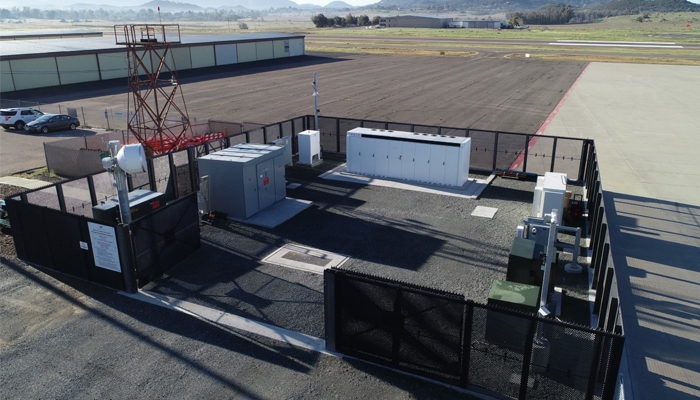SDG&E Builds Microgrid to Support CAL Fire, U.S. Forest Service
SDG&E Builds Microgrid to Support CAL Fire, U.S. Forest Service

San Diego Gas and Electric (SDG&E) fosters strong partnerships with CAL Fire and the U.S. Forest Service to enhance energy grid resilience and to ensure CAL Fire and the U.S. Forest Service can continue to protect communities from wildfires in the event of power outages.
As part of this ongoing partnership, SDG&E recently completed its microgrid in Ramona, Calif., within the High Fire Threat District, or areas most at risk for wildfires. This facility will provide backup power to the Ramona Air Attack Base, which houses CAL Fire and the U.S. Forest Service’s aerial firefighting assets dedicated to protecting rural communities.
The microgrid is powered by 500-kilowatts/2,000 kilowatt-hours of battery storage, and it produces zero emissions. It was built in collaboration with CAL Fire and the U.S. Forest Service and is part of SDG&E’s ongoing commitment to keep essential resources powered during Public Safety Power Shutoffs (PSPS) and other emergency situations.
“As climate conditions continue to worsen, it’s imperative that we develop innovative solutions to support the continuity of essential resources, particularly our region’s emergency response resources, so they are ready for deployment at any moment,” said SDG&E CEO Caroline Winn. “The completion of the Ramona microgrid is a milestone in our ongoing partnership with CAL FIRE and the U.S. Forest Service as we work to make our electric system safer, cleaner, and more reliable.”
“We are grateful for the strong working relationship we have with SDG&E,” said CAL FIRE/San Diego County Fire Chief Tony Mecham. “It gives us peace of mind to have backup power for a critical facility like the Ramona Air Attack Base, especially given the fact that fire season in California has become year-round.”
Microgrids are small power grids that can operate in parallel with or independently of the larger energy grid to keep pre-defined areas or community resources powered during emergencies. In 2013, SDG&E built the first large-scale microgrid in the United States in Borrego Springs, Calif. The company is working to add three more microgrids to help lessen the impact of PSPS and to support community resilience by keeping critical facilities energized.
Scott Tangenberg, a U.S Forest Service supervisor based in San Diego, said preventing wildfires is important not just to protect communities, but to help reduce carbon emissions and lung-damaging air pollution.
“The U.S. Forest Service depends on the Ramona Air Attack Base to protect communities within and adjacent to the Cleveland National Forest. The ability to use aircraft to help suppress catastrophic wildfires is a critical tool in our fire suppression toolbox. Successful fire suppression not only helps safeguard the people and property in local communities, but it also helps protect important watersheds, sensitive wildlife habitats, and cultural resources,” Tangenberg said.
Microgrids are just one of many wildfire mitigation projects included in SDG&E’s Wildfire Mitigation Plan (WMP) filed annually with the California Public Utilities Commission. Visit SDG&E’s website to learn more about the 2022 WMP.